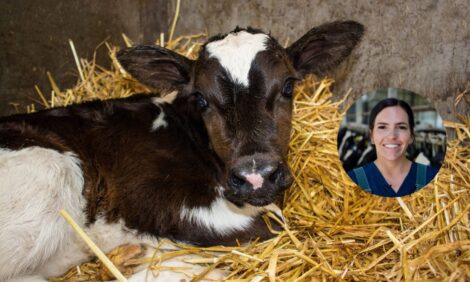



Home for the Holidays – A US Family Farm
ANALYSIS – This week my family and I left the suburbs of Chicago to head home for the holidays, and I thought you might like to hear about my family farm.Home for me is rural Coshocton County, Ohio – it’s about 60 miles east of Columbus which is about right in the middle of the great state of Ohio. For our global readers, Ohio is on the eastern side of the US Midwest.
I grew up on a five-generation 500-acre family farm. When I was growing up, we raised Charolais cattle, Suffolk sheep and corn, soybeans and alfalfa on rotation but were primarily a farrow-to-finish hog operation. In the late 80s, my dad sold the hogs and he now raises hay and about 70 Angus cows on 320 acres - half pasture and half hay.
“My cousin Bob Mikesell told me in the 80s that the industry was moving toward black-hided cattle,” my dad Wirt Mikesell said. “We made the switch to Angus because they are medium-framed cattle, so they are easier to handle and have good calving ease.”
The cows pasture on grass, and in the winter, they have access to protein supplement tubs. They pasture with rotational grazing in a T-shaped field that has several areas fenced off.
“This saves the pasture from getting too trampled down,” Mikesell said. “If they’re walking on the pasture too much, it stunts the grass growth and limits the feeding capacity.”
The herd is all pasture-based; they aren’t fed any grain. This is primarily due to fluctuating grain prices.
“They stay healthy and grow well on pasture, so there’s been no need to supplement with grain,” he said.
Problems with face flies and pink eye force Mikesell to use feed salt with antibiotics along with an insecticide dispenser to help control the flies.
“That’s the only medicine they receive, and I only use that because we have such a problem with pink eye and flies in this area,” he said.
For several years, registered Angus bulls were purchased at the Ohio Beef Expo to build up the herd genetics. Most recently, the best bull calves have been saved for breeding as well as purchasing a few Angus bulls from local breeders.
Six to eight heifers are kept every year and about that many cows are culled to keep the herd balanced.
Bull calves are sold at 450 to 550 pounds which is usually about 6 to 8 months old, and they are sold through the local auction barn in Zanesville, Ohio.
“In 2014, we averaged about $1,100 per head. Several calves were sold prior to July this year which also brought about $1,100 per head, but calves sold in the fall only averaged about $800 per head,” he said. “Even with the drop in price, we’re still profitable – 2014 and early 2015 just had exceptional prices because of reduced US cattle supplies.”
Angus bring a premium price versus Hereford and Shorthorn, so Mikesell says he's really glad they made the change to Angus genetics.
With Christmas fast approaching and my family back home, I wanted to share a little bit of my life on the family farm. While my 13-year-old twins Claire and Zachary are definitely city kids, they always look forward to coming to home to the farm for the holidays. They still love to ride on the tractor, check the cows, bake cookies from scratch with Aunt Lee and string popcorn with Grandma Mikesell. Most of all, they love to look at the stars. You can’t really see the stars in Chicago – only in the country sky do the stars shine so bright.



